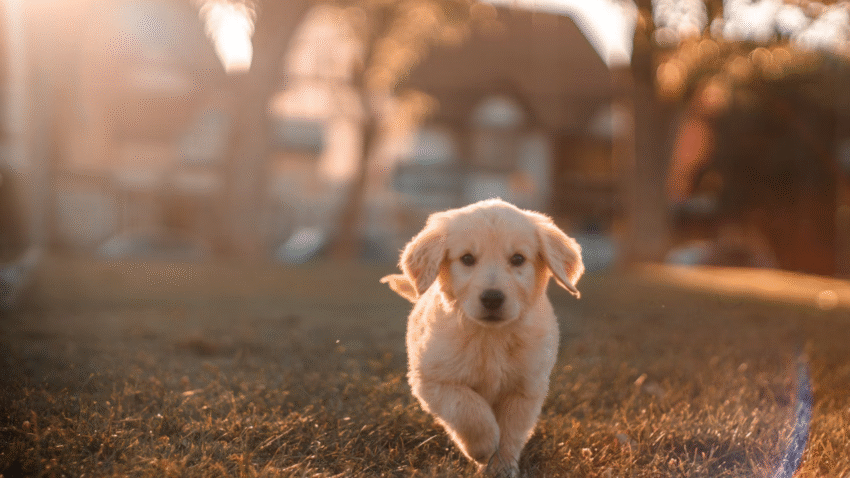Introduction
Does your dog bark, cry, destroy furniture, or panic when you leave the house—even for just a few minutes? If so, you’re not alone. Separation anxiety is one of the most common (and misunderstood) behavior issues in dogs.
The good news is that with the right techniques, structure, and a calm routine, you can reduce your dog’s anxiety naturally—without medication or extreme measures.
In this step-by-step guide, you’ll learn how to recognize the signs of separation anxiety, what causes it, and how to fix it gently using proven, natural methods that work.
What Is Separation Anxiety in Dogs?
Separation anxiety occurs when a dog becomes distressed or panicked when left alone or separated from their owner. It’s not “bad behavior”—it’s a real emotional response, often rooted in fear, dependency, or trauma.
Common signs include:
- Barking, whining, or howling when left alone
- Pacing or excessive drooling
- Scratching at doors or windows
- Accidents in the house despite being house-trained
- Destructive behavior (chewing furniture, digging, tearing up bedding)
- Extreme excitement or clinginess when you return
Dogs with separation anxiety aren’t trying to punish you—they’re overwhelmed and need support.
Step-by-Step Guide to Fix Separation Anxiety Naturally
🧠 Step 1: Understand the Root Cause
Separation anxiety can be caused by:
- Sudden routine changes (e.g., working from home to being away daily)
- Rehoming, shelter trauma, or abandonment
- Being overly attached with no independence
- Lack of mental and physical stimulation
- Genetic predisposition (some breeds are more prone to it)
Knowing the cause helps shape the right approach.
⏳ Step 2: Gradually Desensitize to Alone Time
Start small and build your dog’s confidence slowly. Here’s how:
- Practice short departures of 1–2 minutes
- Leave calmly without dramatic goodbyes
- Return quietly and ignore your dog for 1–2 minutes
- Gradually increase alone time in small increments
- Mix up your departure cues (grab keys, put on shoes) without always leaving
Repeat several times a day. The goal is to show your dog that being alone is normal—and temporary.
🐶 Step 3: Teach Your Dog to Be Alone While You’re Home
Dogs who follow you everywhere often don’t know how to be alone—even when you’re in the next room.
Practice:
- “Place” command (send them to a mat or bed while you step away)
- Closing doors behind you for short periods
- Ignoring clingy behavior calmly
- Rewarding moments when your dog self-settles or stays relaxed in another room
This builds independent confidence gradually.
🧸 Step 4: Create a Calm, Enriched Alone Space
Set up a safe, comforting space where your dog can relax when alone:
- Cozy bed or crate with a soft blanket
- Long-lasting chews or food puzzles (frozen KONGs work great)
- Calming music, white noise, or heartbeat toys
- Low light and minimal stimulation
The goal is to associate alone time with calm, positive experiences.
🍗 Step 5: Use “Alone-Time Treats” Only When You Leave
Reserve special chews, toys, or treats that your dog only gets during alone time. This builds a positive association with your absence.
Examples:
- Frozen peanut butter in a KONG
- Dehydrated meat chews
- Lick mats with dog-safe yogurt or pumpkin
Remove these items when you return, so your dog begins to look forward to alone time.
🐾 Step 6: Stick to a Structured Routine
Dogs with anxiety thrive on predictable routines. Try to:
- Feed and walk your dog at the same times daily
- Keep arrival and departure calm and consistent
- Avoid dramatic hellos and goodbyes
- Give 30–60 minutes of exercise and mental stimulation before leaving
Structure helps reduce uncertainty and fear.
🌿 Step 7: Try Natural Calming Aids
These natural options can reduce anxiety without sedation:
- CBD oil (pet-safe, vet-approved only)
- L-theanine or calming chews (like Zesty Paws or VetriScience)
- Adaptil calming pheromone sprays or diffusers
- Chamomile, valerian, or passionflower-based treats
- Lavender-infused dog beds or bandanas
Always introduce new supplements slowly and consult your vet if your dog takes other medications.
💪 Step 8: Reward Calm, Ignore Panic
It’s natural to want to comfort your dog when they’re upset—but this can reinforce the anxious behavior.
Instead:
- Reward calm behavior, especially before you leave
- Ignore attention-seeking (whining, pawing) without scolding
- Wait until your dog is calm before petting or interacting
- Praise or give a treat when they settle independently
Consistency teaches your dog that calm = attention, and panic = nothing happens.
Common Mistakes to Avoid
- Punishing your dog for destructive behavior:
This increases fear and makes anxiety worse. - Leaving without preparing your dog first:
No desensitization = high stress. - Too much freedom too soon:
Some dogs do better confined in a crate or playpen during training. - Relying only on toys or treats:
These are tools, not fixes—behavior change needs structure and training. - Giving in to clingy behavior:
Rewarding constant closeness increases dependency.
Extra Tips & Recommendations
- Record your dog while you’re gone to assess progress and triggers
- Use a pet camera to talk or dispense treats if it helps calm your dog
- Involve a dog walker or sitter during early phases to reduce long absences
- Leave a worn shirt or item that smells like you in their space
- Work with a certified behaviorist if anxiety is extreme or not improving
🔗 Related article: How to teach your dog to stay in place
Conclusion
Fixing separation anxiety naturally takes time, patience, and consistency—but it’s one of the best things you can do for your dog’s emotional well-being. By creating a calm routine, building independence, and using positive associations, you can help your dog learn that being alone is safe—and even enjoyable.
With every small step forward, your dog becomes more confident, and you get closer to a peaceful, worry-free home.
